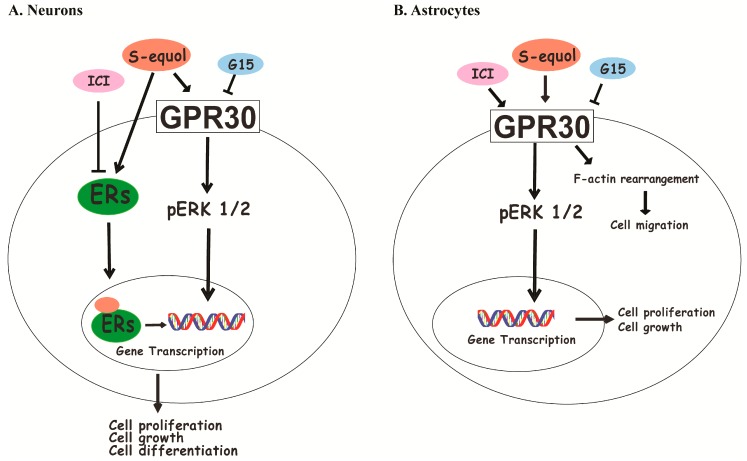Figure 5.
The proposed mechanism of S-equol in cerebellar development through both genomic and nongenomic actions. S-equol enters the cells and may bind (↓) to the cytoplasmic, nuclear ERs or GPR30 to induce gene transcription, which leads to cell growth and augmentation of dendrite arborization in neurons (A). These effects were suppressed by an ER inhibitor, (i.e., ICI (┴)). On the other hand, S-equol also activated the GPR30 (↓) signaling pathway through the activation of phosphorylation of ERK1/2, enhanced cell proliferation, and induced F-actin rearrangement to increase cell migration in astrocytes (B). These effects were suppressed by the GPR30 inhibitor G15 (┴).

